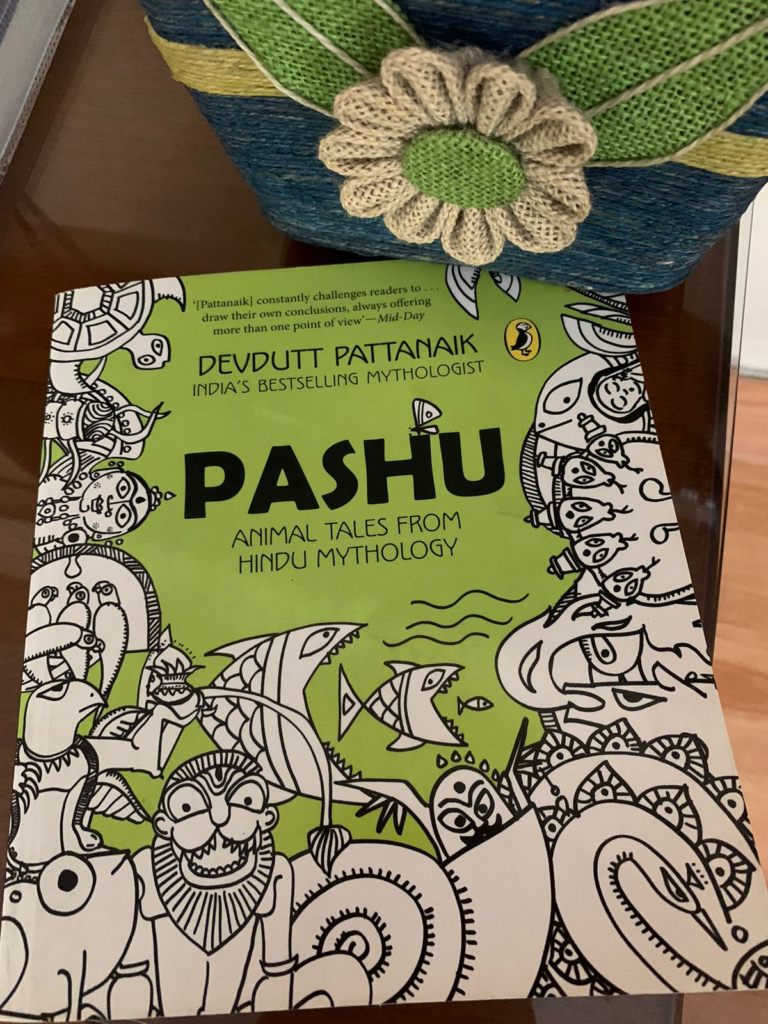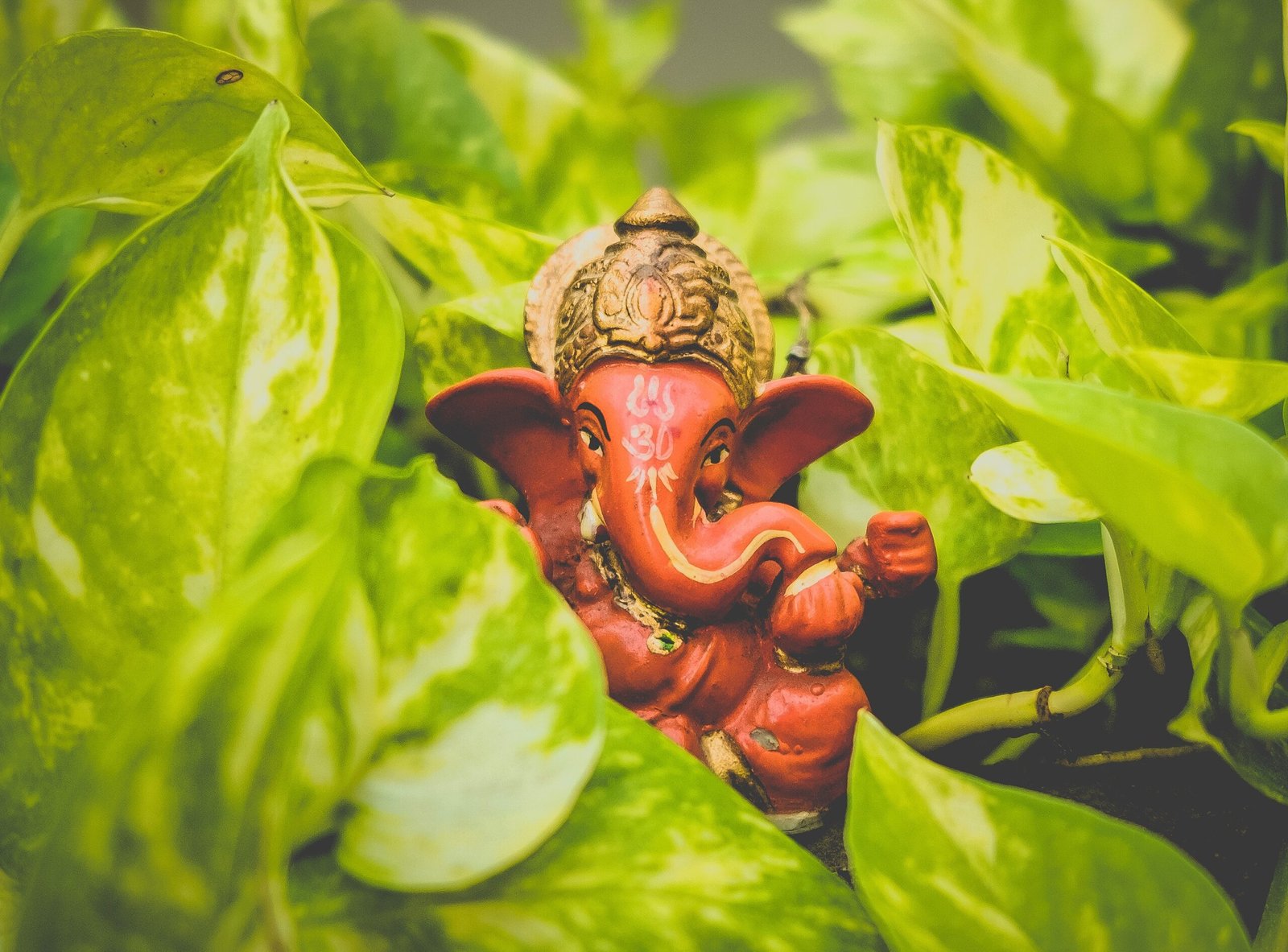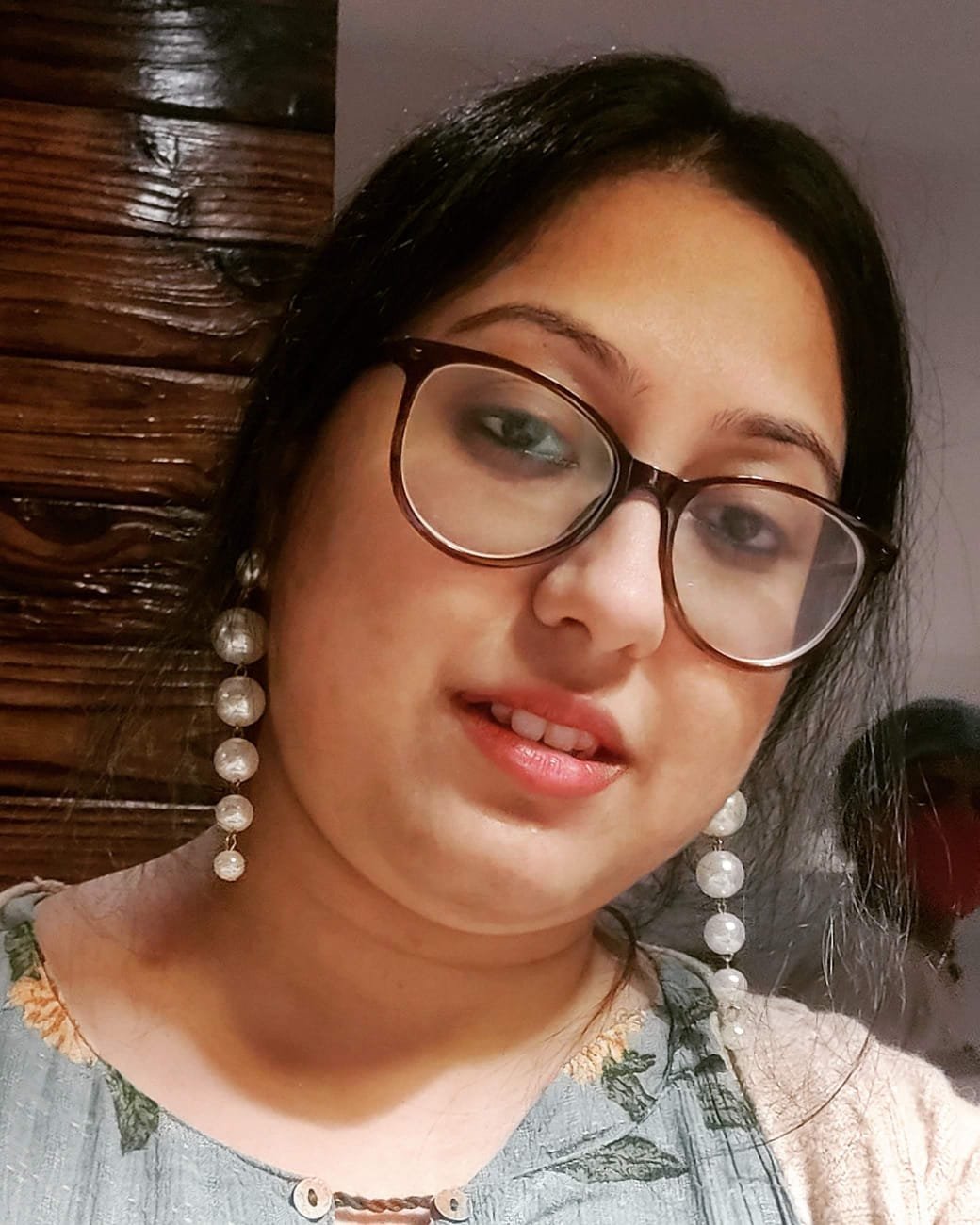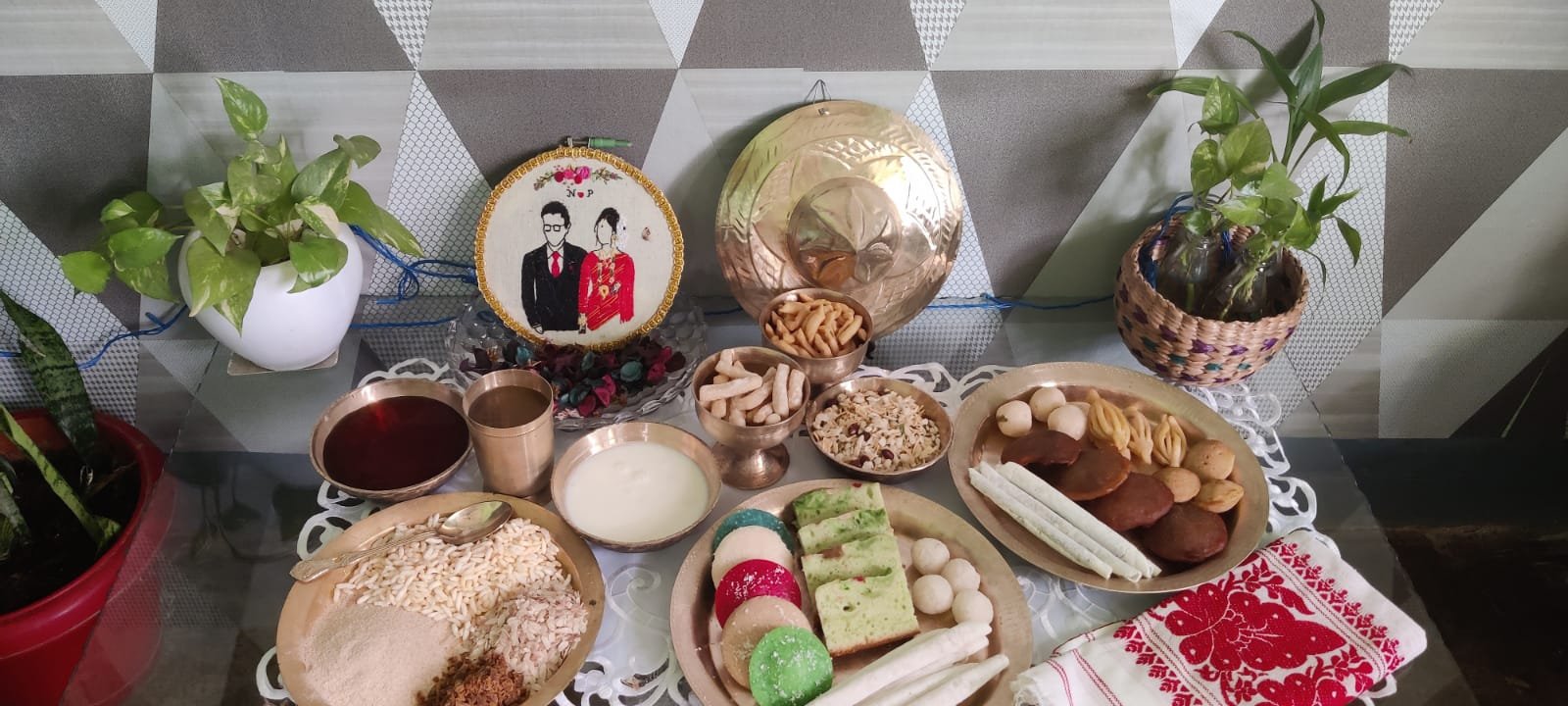Decoding Ganesha!
I can hardly remember the day I was reading Ganapati, a story from Devdutt Pattanaik‘s book titled Pashu: Animal Tales from Hindu Mythology. The listener was my little girl, who then had a fondness for folk stories and mythological tales and listened to them with rapt attention.

Nonetheless, I do recall my daughter’s special interest in Ganesha since her grandmother had already introduced her to the elephant-headed god in her home temple. There, he occupied the principal position just as he did in every puja everywhere.
Call him as you will.
So that day, the story sparked her curiosity and offered interesting reasons why her “cute god” had so many names. The name Vinayaka explains the way he was born—without the need for a nayaka or a man. He was moulded by Parvati out of turmeric and sandalwood paste before being brought to life with breath.
The name Gajanan takes us back to the reckless incident in which Shiva beheaded the boy, Parvati’s companion, out of envy. He was compelled to replace it, which he did with an elephant head (perhaps that of Airavata’s, the white elephant, which served as the mount of Indra). It was Shiva who then called him Ganapati, or the one who leads the ganas, or the followers of Shiva.
My friend, Ganesha!
Then there was a time when a plethora of programmes and movies were based on Ganesha. His assorted avatars entertained kids, including mine, and they went gaga over his power and prowess. Little did I know then that the potbellied, laddu-loving deity would become the faith that can only be felt and never fostered.

From book to belief, from reading to realising it…
A couple of years after the story-reading session that I mentioned at the beginning, my mother was combating cancer in a hospital in Mumbai. Her chances of making it through seemed scant and scary. We, as a family, were going through an acutely hurtful phase of life. In retrospect, I can claim it to be humbling and insightful, but at that point, it obfuscated every way forward.
After an intense and intricate surgery of around ten hours, we refused to retreat even in our minds. That night, my brother mentioned something. He wanted the two of us to go to Shree Siddhivinayak Mandir the next morning and do his darshan. None of us were staunch believers, and the desire to visit the temple was perhaps to vent out our maelstrom of emotions.
With impassive faces and equivocal intentions, my brother and I faltered through the feverish crowd. Our hands were full with the offerings, while our hearts were hollow with the inscrutability of life.
Mortals have to be grateful to experience the grandeur of the immortal. Having paid extra for an exclusive view of the Lord, there we were standing in front of Navasacha Ganapati, the one who grants every wish that is genuinely asked. That day, it was us, a son and a daughter, standing before Him with heavy hearts and bare hands. I can hardly express what I felt in those fleeting moments, but the silence of the exchange filled me with unparalleled poise and peace.

Back in Kolkata, a course of chemotherapy continued for my mother. Eventually, excruciating pain was accompanied by an unsparing laceration of the self. There were moments when she hated her very existence, but our binding belief in Vighnaharta surpassed every insurmountable challenge.
The seed of hope was planted deep. Slowly but surely, it was growing into a gigantic tree as our faith got the better of our fears. We celebrated our speck-like wins and snubbed our critical falls. Progressively, my mother got better as the dark cells in her body and her mind died.
Experiences like these, to say the least, are metamorphic. It impacts not just the individual but the entire unit as a whole. We, as a family, learned to live freely and fully, embracing our fallacies as much as our strengths and feeling grateful like never before. Perhaps all this was possible because we were bolstered by a belief that made more sense than any reason ever rendered.
Since then, I have gone to seek the blessings of Shri Siddhivinayak Ganesha every year. In his presence, I experience bounty and beatitude that only the Buddhinath (God of Wisdom) is capable of bestowing. Today, he is the invincible, intangible part of me, and every Ganesh Chaturthi is a reminder of the essence he encapsulates.

Beyond religion
Ganesh Chaturthi, in my humble opinion, should not be restricted to a specific religion or country. While apparently, it commemorates the birth or rebirth of Ganesha, it has a universal appeal. It is symbolic of starting afresh with renewed vigour, no matter what obstacles impede our movement. Don’t you think such a message deeply resonates with the core of the human spirit? Is it not the crux on which every living cell survives? If so, let’s come together and chant…
OM GAN GANAPATAYE NAMO NAMAHA

















Facebook Comments